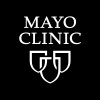
Watch-and-Wait Approach With Dostarlimab in Localized dMMR/MSI-H Gastric Cancer: GERCOR Phase II...
Adenocarcinoma - GEJGastric AdenocarcinomaThis phase II study will evaluate dostarlimab with a watch-and-wait approach for patients with localized mismatch repair deficiency (dMMR)/microsatellite instability (MSI) gastric or oeso-gastric junction adenocarcinoma. The goal of the study is to determine whether the surgery could be avoided in patients with localized dMMR/MSI-H gastric/OGJ adenocarcinoma with complete response at endoscopy and biopsies free of tumoral cells after treatment with dostarlimab, with a watch-and-wait approaches.

XELOX Combined With Anlotinib and Penpulimab vs XELOX as Adjuvant Therapy in ctDNA Positive Gastric...
CarcinomaGastrointestinal Diseases5 moreThis is an open label, randomized, phase Ⅱ, multi-cohort study to treat subjects with ctDNA Positive Gastric and Esophagogastric Junction Adenocarcinoma. The patients will be randomized into two arms consist of Penpulimab + Anlotinib (3 weeks/cycle) + XELOX and XELOX at a ratio of 1:1. This study is conducted to assess safety and anti-tumor activity of the monoclonal antibody Penpulimab in combination with Anlotinib and standard chemotherapy as adjuvant treatment for ctDNA-positive Gastric, or Gastroesophageal Junction Carcinoma.

Pembrolizumab Plus Bevacizumab and Chemotherapy for ALK-rearranged NSCLC With Persistent 5'ALK
ALK Gene MutationLung Adenocarcinoma1 moreThis is an open-label, multiple center, single-arm phase II study to evaluate the safety and efficacy Pembrolizumab,Bevacizumab in combination with Chemotherapy could improve PFS in Alectinib Failed ALK-rearranged Advanced Lung Adenocarcinoma with Persistent 5'ALK. The eligible patients should have Stage IV Adenocarcinoma ALK-rearranged tested by NGS Perisitent with 5'ALK Failed from first line Alectinib. The patients should meet the physical requirements to receive Pembrolizumab, Bevacizumab with Chemotherapy. All the patients who meet these requirements will be enrolled in this study. The eligible patients will be treated with Pembrolizumab 200 mg intravenously (IV) plus Bevacizumab 15mg/kg+ Pemetrexed 500mg/m2+Carboplatin AUC=4 for up to 4 cycles followed by Pembrolizumab 200mg Q3W+ Bevacizumab 15mg/kg+Pemetrexed 500mg/m2 for up to 31cycles or until disease progression, intolerable toxicity, or physician or participant decision.

Study Evaluating Neoadjuvant Immunotherapy Increasing CD8+ Cell Infiltration in Advance Gastric...
Advanced Gastric CarcinomaCD8+ Tumor Infiltrating Lymphocytes1 moreFocusing on the clinical question of whether patients with advanced gastric cancer can benefit from immunotherapy, this project intends to detect the degree of CD8+ tumor-infiltrating lymphocyte infiltration in patients with advanced gastric cancer before and after receiving neoadjuvant combined immunotherapy and neoadjuvant therapy alone. To explore the evolving nature of tumor immune response before and after neoadjuvant therapy for gastric cancer, and quantitatively present it through chemical immunohistochemical techniques to achieve a more accurate diagnosis and treatment and improve the long-term efficacy of patients.

Single-center, Multi-cohort Exploratory Phase Ib/II Clinical Study of First-line Treatment of Unresectable...
Gastric CancerGastroesophageal-junction CancerAbstract Study title: Single-center, Multi-cohort Exploratory Phase Ib/II Clinical Study of First-line Treatment of Unresectable Locally Advanced/Advanced Adenocarcinoma of the Stomach or Gastroesophageal Junction Based on Different Genotypes Protocol No: GC-MATCH Initiator: Henan Cancer Hospital Nature of study Investigator-initiated exploratory study Subjects Advanced first-line gastric cancer or adenocarcinoma of the gastroesophageal junction Objective: To evaluate the efficacy and safety of different first-line treatment options for unresectable locally advanced/advanced gastric or combined gastroesophageal adenocarcinoma with different gene/protein types. Evaluation criteria: To evaluate the adverse effects of drugs using the NCI CTCAE V5.0 criteria. RECIST1.1 criteria were used to evaluate drug efficacy Study endpoints: Primary indicators Objective Response Rate (ORR) Secondary indicators 1. drug safety. 2. disease control rate DCR (CR+PR+SD). 3. duration of remission DoR. 4. disease-free survival (PFS) and overall survival time (OS). 5. R0/R1 surgical resection rate Study design: Single-center umbrella clinical trial Planned number of enrollment: Total 39-45 cases Sample size estimation: This is an exploratory study and sample size was not calculated Statistical methods: Selection of data for statistical analysis Full Analysis Set (FAS): The efficacy analysis was performed on all patients who were enrolled and used the drug at least once, according to the principle of intentional analysis (ITT). Per-protocol Set: Cases with at least one oncologic efficacy assessment, compliance with the trial protocol, good compliance, no prohibited drugs during the trial, and completion of the case report form. Safety Analysis Set: All patients who had used the trial drug at least once and had a safety record after the drug was administered were enrolled in the Safety Analysis Set. Statistical analysis plan Validity analysis: for the efficacy index PFS, the Kaplan-Meier method will be used to estimate its median time and column Statistical methods: Out of two-sided 95% confidence intervals. Disease control rate (DCR = CR+PR+SD) and objective remission rate (ORR = CR+PR) were calculated using Fisher exact probability and bilateral 95% confidence intervals were presented. Safety analysis: descriptive statistical analysis was used to tabulate the AEs that occurred in this trial. laboratory test results were described as normal before the trial but abnormal after treatment and in relation to the trial drug when abnormal changes occurred. Treatment protocol: All subjects in this study were first tested for genes/proteins (HER2 protein, HER2FISH, PD-L1 protein 22C3, Claudin18.2, MMR) and received treatment in different groups according to gene/protein expression. Group 1 HER protein positive 3+ or FISH amplification or HER protein 2+ but FISH amplification Initial treatment (4-6 cycles): IBI315 injection, oxaliplatin, capecitabine Group 2 Claudin18.2 protein-positive Initial treatment (4-6 cycles): PD-L1 monoclonal antibody, TST001 injection, oxaliplatin, capecitabine Group 3 Her protein and Claudin18.2 protein were negative Initial treatment (4-6 cycles): TQB2450 injection, Anrotinib, Oxaliplatin, Capecitabine Patients can undergo radical gastric cancer surgery or radical gastric cancer surgery + local treatment during the maintenance treatment phase if their condition is stable and after in-hospital MDT consultation. The duration of maintenance treatment was 2 years from the time of enrollment. Principal Investigator: Luo Suxia, Li Ning Group leader unit: Henan Cancer Hospital

E7 T-cell Receptor (TCR) -T Cell Induction Therapy for Locoregionally Advanced HPV-associated Cancers...
HPV-Associated Cervical CarcinomaHPV-Related Carcinoma15 moreThe goal of this study is to determine the feasibility of administration of a single dose of E7 TCR-T cells as induction therapy prior to definitive treatment (chemoradiation or surgery) of locoregionally advanced HPV-associated cancers. The intent of E7 TCR-T cell treatment is to shrink or eliminate tumors and thereby facilitate definitive therapy and increase overall survival. This study seeks to determine 1) if E7 TCR-T cell can be administered without undue delay in definitive treatment, 2) the tumor response rate to E7 TCR-T cell treatment, 3) and the disease-free survival rate at 2 and 5 years. Participants will undergo an apheresis procedure to obtain T cells that will be genetically engineered to generate E7 TCR-T cells. They will receive a conditioning regimen, a single infusion of their own E7 TCR-T cells, and adjuvant aldesleukin. Participants will follow up to assess safety and determine tumor response and will return to their primary oncology team for definitive therapy.

Austrian Registry for Evaluation of Treatment Patterns and Outcome in Patients With Advanced Pancreatic...
Pancreatic CancerAdvanced Pancreatic CarcinomaTo systematically collect and analyse real-world data on treatment patterns, clinical outcomes and toxicities among patients with advanced pancreatic ductal adenocarcinoma (PDAC) undergoing systematic treatment in Austria

Aldesleukin With Nivolumab and Standard Chemotherapy for Treatment of Gastric Cancer With Peritoneal...
Clinical Stage IV Gastric Cancer AJCC v8Gastric Adenocarcinoma3 moreThis phase Ib trial test effects of aldesleukin in combination with nivolumab and standard chemotherapy in treating patients with gastric cancer that has spread to the tissue lining of the abdomen (peritoneal metastasis). Aldesleukin is similar to a protein that naturally exists in the body that stimulates the immune system to fight infections. Immunotherapy with monoclonal antibodies, such as nivolumab, may help the body's immune system attack the cancer, and may interfere with the ability of tumor cells to grow and spread. Chemotherapy drugs, such as leucovorin calcium, fluorouracil, and oxaliplatin, work in different ways to stop the growth of tumor cells, either by killing the cells, by stopping them from dividing, or by stopping them from spreading. Giving aldesleukin in combination with nivolumab and standard chemotherapy may work better in treating patients with gastric cancer with peritoneal metastasis.

Volatile Organic Compound Assessment in Pancreatic Ductal Adenocarcinoma
PDAC - Pancreatic Ductal AdenocarcinomaPancreatic CancerPatients with early pancreatic cancer often have symptoms that could also be caused by many common benign conditions, or no symptoms at all. Jaundice, weight loss and pain are 'red flag' symptoms of pancreatic cancer that are linked to incurable disease. At the moment only patients with 'red flag' symptoms are urgently referred for diagnostic testing to find out if they have the cancer. As a result, late diagnosis is a common feature of pancreatic cancer. This leads to limited treatment options being available to patients by the time they are diagnosed, and ultimately results in poor survival rates. There is a clear need to improve earlier detection of pancreatic cancer so that patients with pancreatic cancer can be identified earlier and faster, enabling them to start treatment more quickly. The study team is developing a non-invasive breath test that detects small molecules called volatile organic compounds (VOCs) that may be altered by pancreatic cancers. For patients with non-specific symptoms, this test would help general practitioners (GPs) to identify those patients that may indeed have an underlying pancreatic cancer, who would benefit from referral for specialised pancreatic cancer tests.

Prognostic and Predictive Markers of Treatment Response in Patients With PAC.
Pancreatic AdenocarcinomaThe objective of this study is to identify prognosis and predictive markers of response to treatments (surgery, chemotherapy,...) in patients with pancreatic adenocarcinoma. The effectiveness and tolerance of these treatments in current practice is also evaluated.
